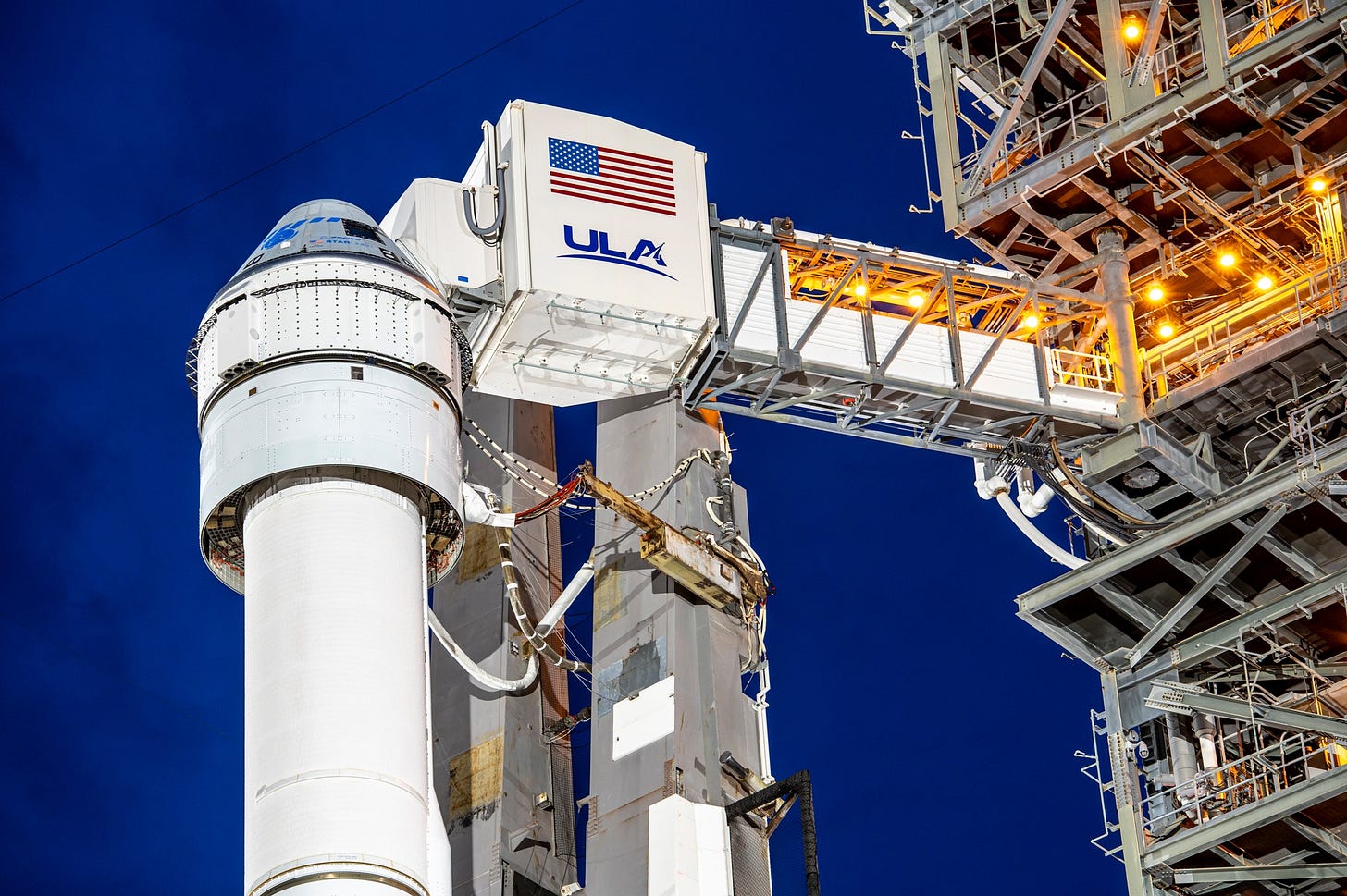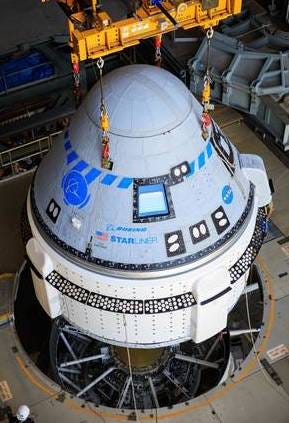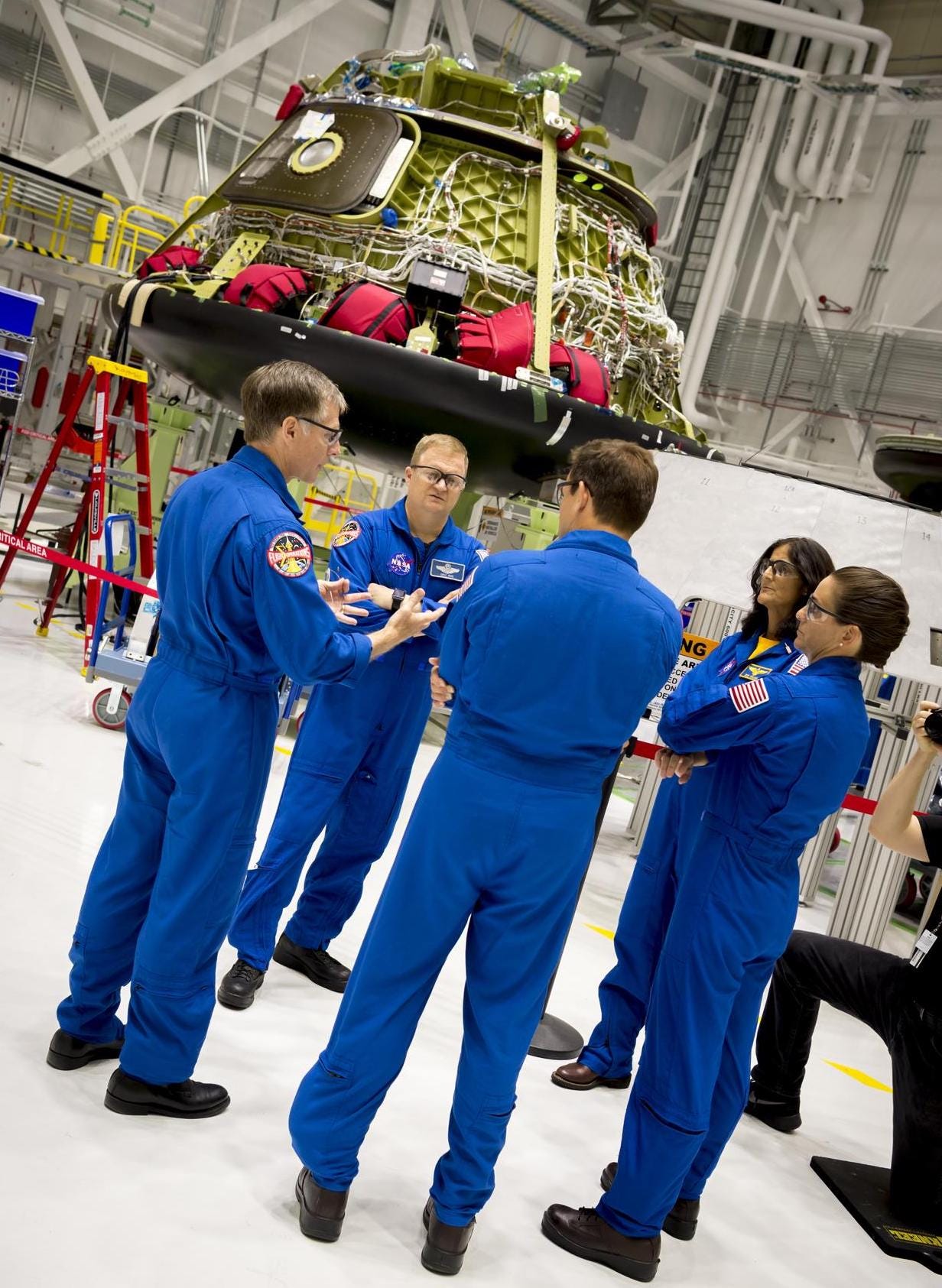
Thanks for finding Full Throttle. Please share and subscribe here. Full Throttle posts twice a week. Follow me on Twitter, Instagram, and Linkedin.
The Starliner sits atop an Atlas V rocket at Cape Canaveral ready for its re-do. “We’re ready to take the next steps,” a Boeing executive declared. Boeing’s second Orbital Flight Test (OFT-2) is crucial for the company and NASA.
Boeing has been battered by mishaps and problems in this program and continuing concerns with its commercial airplane division after two crashes and trouble on two production lines.

Boeing's Starliner spacecraft being fitted to the Atlas V rocket. (Credit: NASA)
NASA is a bit anxious too. The space agency has long wanted at least two companies offering rides to low earth orbit (LEO) with the ability to dock with the International Space Station (ISS). That desire has only grown stronger since Russia invaded Ukraine. For nearly a decade, the Russian Soyuz was the only ride to space for NASA. The agency doesn’t want to be vulnerable like that again.
NASA'S RIDE TO THE ISS
The Starliner and SpaceX’s Dragon were selected by NASA in 2014 as the spacecraft to fulfill its desires. Starliner was supposed to fly in 2017. No one would admit it, but there was a bit of a race to see which company would get crews to the station first. SpaceX accomplished that mission.
Portions of the Boeing/NASA webcast in December 2019 when Starliner started using fuel because of a software problem and mission timing. (Credit: NASA)
It wasn’t until late 2019 that the first Boeing test flight actually launched. The spacecraft got into space, but there were problems. The rocket’s clock and the spacecraft’s clock were not in sync.
That meant the spacecraft’s computers thought it was in a later part of the mission, in a different location, and it started firing its small thrusters, using precious fuel. The spacecraft also had trouble communicating with satellites. The problems led Boeing to decide it couldn’t complete its mission of docking with the ISS.
Video from inside the Starliner as its thrusters were firing every few seconds depleting its fuel reserves and forcing an end to the test and reentry. (Credit: Boeing)
The “incomplete” test meant Boeing would be forced to conduct a second test, OFT-2, at its expense. Boeing took a charge on its earnings of more than $400 million for the redo. That may not have been enough money. More trouble was ahead.
SECOND LAUNCH SET
Boeing prepared to launch Starliner for the second time in 2021. The rocket was on the pad and ready to go when there was an emergency on the ISS. A new Russian module started uncommanded firings of its thrusters. Boeing’s launch was delayed for a handful of days. The day before the rescheduled launch, a problem was discovered that would set the company back nearly a year.

Some of the astronauts scheduled to fly in the Starliner visit the Boeing facility in 2018. (Credit: NASA)
On the launchpad last August, the launch team started having trouble with some fuel valves in the actual Starliner spacecraft. The valves were stuck shut. The teams tried several procedures to get the valves to open. When some valves stuck shut, the launch was scrubbed. The entire vehicle was rolled off the pad and the Starliner was removed from the booster rocket.
CORROSION IN VALVES
Boeing discovered that the humidity in Florida (ambient moisture) got into the valves and reacted with the fuel, causing corrosion that froze the valves in place. Boeing says some of the moisture may have gotten in through a gap in a hole for a wiring harness.
Those gaps have now been “caulked” and Boeing says it is loading the fuel later so it sits next to the valve for the shortest possible time. “It’s a really exciting time,” Boeing’s Dr. Michelle Park told reporters.
Boeing's Dr. Michelle Parker explains what the company needs to accomplish during the second test flight. (Credit: NASA/Boeing)
The Boeing team will have to complete its test flight with a safe approach to the ISS as well as docking and undocking. If the company succeeds this second time, completing the test, NASA says Starliner could carry astronauts to the ISS before the year is out . It is crucial test for a battered brand.
Launch is set for May 19 at 6:54 pm EDT.
(Cover photo credit: NASA)




